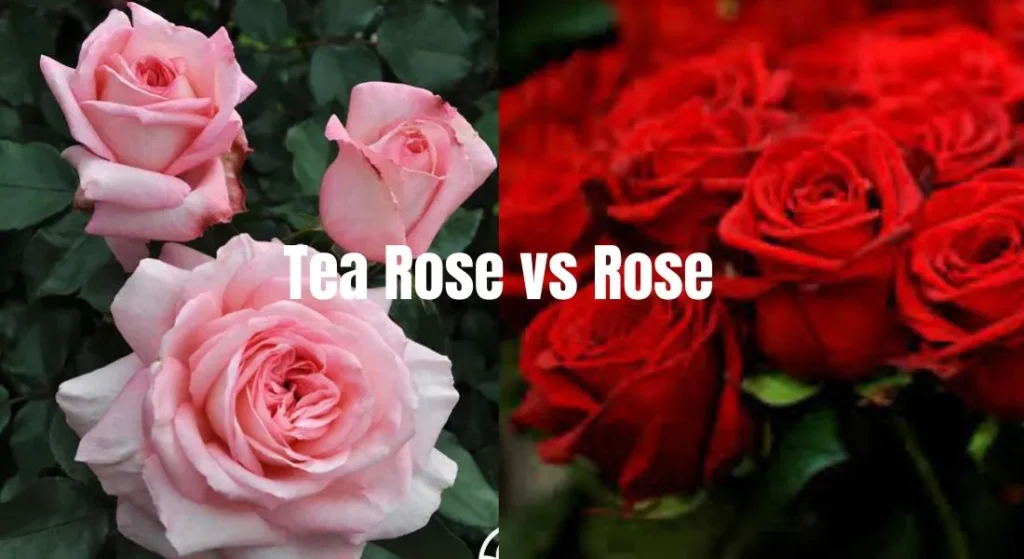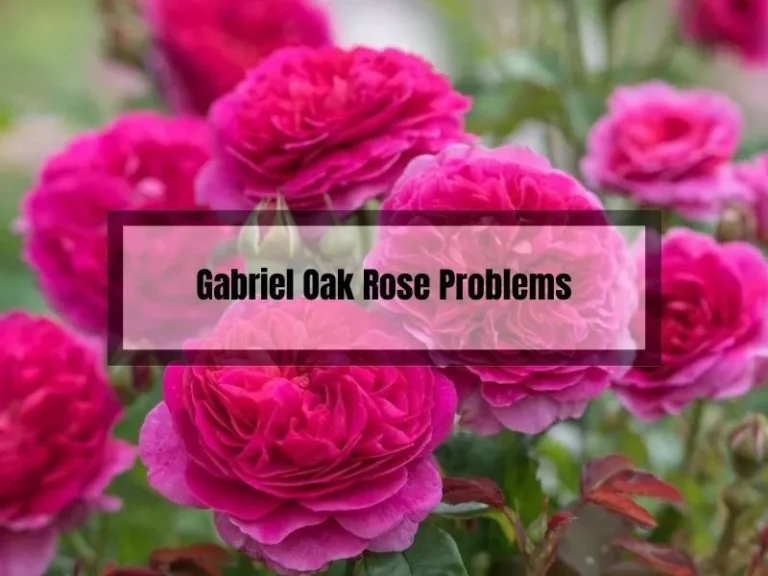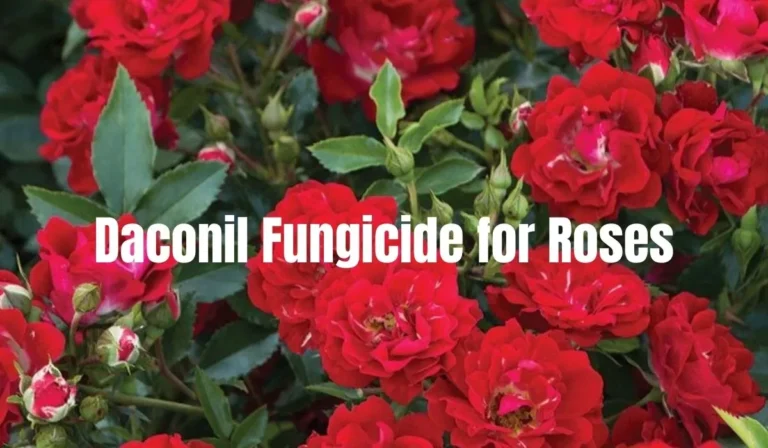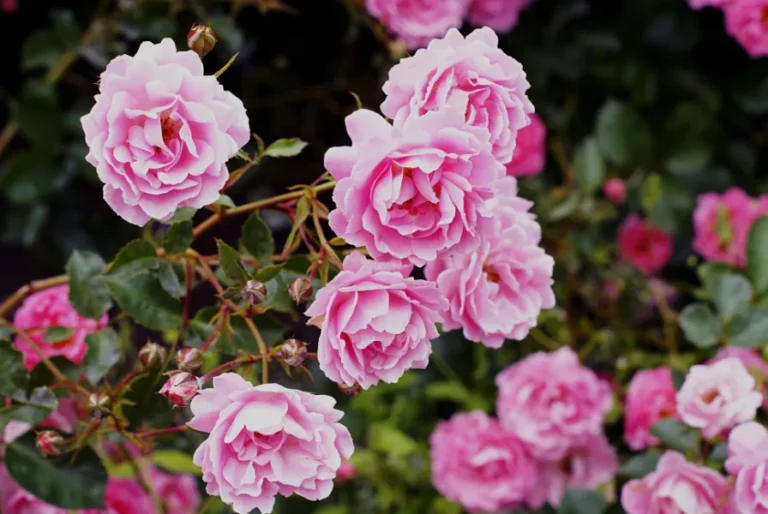Tea Rose vs Rose: Understanding the Differences and Similarities
From Louise: Passionate about gardening, I specialize in plant care and flower knowledge. I’m here to share my expertise and assist with your gardening queries. Feel free to ask any questions or seek advice on lawn care—I’ll respond within 24 hours!
If you’re a gardening enthusiast, you may be familiar with the beauty of roses. However, with so many varieties to choose from, it can be challenging to decide which one to plant in your garden or use in your bouquet. In this article, we’ll explore the differences between tea roses and regular roses, so you can make an informed decision on which one to choose.
Tea roses and regular roses have distinct differences that make them unique. Tea roses are known for their large, fragrant blooms and long stems, while regular roses are more compact and produce multiple blooms per stem.
Tea roses typically have only one flower per stem, whereas regular roses can produce multiple flowers on each stem. Additionally, tea roses have more petals per flower than regular roses.

Tea Rose vs Rose
If you are planning to grow roses in your garden, you might have come across the terms Tea Rose and Rose. While both are types of roses, they have some differences that you should know before making a decision.
Tea Rose
Tea Roses are a type of hybrid rose that originated in China and were introduced to the Western world in the 19th century.
They are known for their large, fragrant blooms that come in a wide range of colors, including pink, white, and yellow. Tea Roses are also known for their long stems, making them perfect for cut flower arrangements.
Here are some key characteristics of Tea Roses:
- Larger flowers and longer stems compared to shrub roses
- Usually have only one flower per stem
- More petals per flower than shrub roses
- Often grow much taller than shrub roses
- Vary in fragrance, some are very fragrant and others only slightly
Rose
The term Rose refers to a wide range of species and cultivars of the genus Rosa. They are known for their beauty, fragrance, and versatility, making them a popular choice for gardens and landscapes.
Roses come in different types, such as Hybrid Tea, Floribunda, Grandiflora, Climbing, and Shrub.
Here are some key characteristics of Roses:
- Come in a wide range of colors, sizes, and shapes
- Can have single or double blooms
- Vary in fragrance, some are very fragrant and others only slightly
- Can be grown as bushes, climbers, or ground covers depending on the type
Which one to Choose?
Choosing between Tea Roses and Roses depends on your personal preference and gardening goals. If you are looking for large, fragrant blooms with long stems, Tea Roses might be the right choice for you.
On the other hand, if you want a wider range of colors, sizes, and shapes, Roses might be a better fit. Another factor to consider is the growing conditions.
Tea Roses require more care and attention than Roses, as they are more susceptible to diseases and pests. Roses, on the other hand, are more adaptable and can thrive in a wider range of growing conditions.
History of Tea Rose and Rose
Roses have been cultivated for thousands of years and have been used for various purposes such as decoration, perfume, and medicine. The first recorded evidence of roses dates back to ancient Babylon, where they were grown for their fragrance and beauty. Over time, roses spread throughout the world and became a popular symbol of love and romance.
Tea roses, on the other hand, were introduced in the early 19th century when a group of Chinese roses was brought to Europe. These roses were smaller and more delicate than the traditional European roses and had a unique fragrance that was different from other roses. They were named after their tea-like fragrance and quickly became popular among gardeners and rose enthusiasts.
The popularity of tea roses continued to grow in the 20th century, with many new varieties being developed through hybridization. Today, tea roses are known for their large, elegant blooms, long stems, and delicate fragrance. They are often used in bouquets and as cut flowers due to their long vase life.
In contrast, traditional roses, also known as shrub roses, have a long and rich history. They have been grown in Eurasia since ancient times and appear in Minoan jewelry and frescoes from before 1400 BC. They were also grown in ancient Egypt and are known to have been used in traditional medicine.
Shrub roses are more compact than tea roses and produce multiple blooms per stem. They are hardy and can survive in a variety of conditions, making them a popular choice for gardeners. Traditional roses come in a wide range of colors and sizes, and many varieties are known for their strong fragrance.
In the late 19th century, hybrid tea roses were developed by crossing tea roses with hybrid perpetual roses. These roses have become the most popular variety of rose in the world due to their large, high-centered blooms and long stems. They are often used in floral arrangements and as cut flowers.
Characteristics of Tea Rose
Tea Roses are known for their delicate fragrance and stunning appearance. They are a popular choice among gardeners due to their large flowers, long stems, and beautiful colors. Here are some of the key characteristics of Tea Roses that make them so special:
- Large Flowers: Tea Roses have larger flowers than other types of roses, usually 3-5 inches in diameter, with a high petal count. This makes them perfect for creating stunning floral arrangements.
- Long Stems: Tea Roses have longer stems than other types of roses, making them ideal for cutting and using in floral arrangements. The long stems also make them perfect for creating a beautiful bouquet.
- One Flower Per Stem: Tea Roses typically have only one flower per stem. This makes them perfect for creating a simple, elegant floral arrangement.
- Fragrance: Tea Roses are known for their sweet and floral fragrance, adding a touch of romance to your garden.
- Colors: Tea Roses come in a variety of colors, including pink, red, white, and yellow. Some varieties even have bi-colored petals, adding more interest to your garden.
- Blooming Season: Tea Roses bloom in the summer and fall, adding some color to your garden during the warmer months.
- Maintenance: Tea Roses require regular maintenance, including pruning, fertilizing, and watering, to keep them healthy and blooming. However, their beauty and fragrance make them well worth the effort.
Overall, Tea Roses are a beautiful and elegant addition to any garden. With proper care and maintenance, you can enjoy the beauty of Tea Roses in your garden for years to come.
Related Posts:
- Discover the Enchanting World of Parkers Roses: Expert Tips and Blooming Beauty
- Heirloom Roses: A Guide to Growing and Caring for These Beautiful Flowers
Characteristics of Rose
Roses are widely known for their beauty, versatility, and fragrance. Here are some key characteristics of roses that make them unique from other flowers.
Appearance
Roses come in a variety of colors and can be single or double blooms. They have soft and delicate petals that can be smooth or slightly rough in texture. The appearance of a rose varies depending on the type of rose. [1]
Fragrance
The fragrance of a rose is one of its most distinctive characteristics. Many rose varieties have a strong, sweet scent that can fill a room with their aroma.
The fragrance of a rose can vary depending on the type of rose. Some roses have a light, fresh scent, while others have a more intense, musky aroma. [2]
Growth Patterns
Roses grow in a variety of patterns depending on the type of rose. Some roses grow on long stems, making them ideal for use in cut flower arrangements.
Others grow in a bushy, compact shape, making them great for use in gardens or as hedges. Some roses are climbers, growing up trellises or walls. [1]
Blooming
The blooming time of a rose varies depending on the variety. Some roses bloom only once a year, while others bloom several times throughout the growing season. The length of time a rose blooms can also vary, with some blooms lasting only a few days and others lasting several weeks. [1]
Disease Resistance
Roses are susceptible to several diseases, including black spot, powdery mildew, and rust. However, many modern rose varieties have been bred to be disease-resistant, making them easier to grow and care for. [1]
Related Posts:
Comparing Tea Rose and Rose
If you’re a gardening enthusiast, you’re probably familiar with the terms Tea Rose and Rose. While these two terms are often used interchangeably, they actually refer to different types of roses.
In this section, we’ll compare Tea Roses and Roses to help you understand the key differences between them.
Tea Roses
Tea Roses are a type of rose that originated in China and were introduced to the West in the 19th century. They are known for their large, fragrant flowers and long stems.
Tea Roses typically have only one flower per stem, and the blooms are usually larger than those of other types of roses. They also have more petals per flower than other rose varieties.
In terms of growth habit, Tea Roses are usually taller and more upright than other types of roses. They require regular pruning to maintain their shape and encourage new growth. Tea Roses are also more susceptible to diseases and pests than other types of roses, so they require regular care and attention.
Roses
Roses are a broad category that includes many different types of roses. The three main categories of roses are Old Garden Roses, Wild Roses, and Modern Roses.
Old Garden Roses are the traditional roses that have been grown for centuries, while Wild Roses are the original species of roses that grow in the wild. Modern Roses are the result of breeding between Old Garden Roses and Wild Roses.
In terms of growth habit, Roses can be tall or short, upright or spreading, and they can have single or multiple blooms per stem. They are generally easier to care for than Tea Roses and are more resistant to diseases and pests.
Key Differences
Here are some of the key differences between Tea Roses and Roses:
- Tea Roses have larger flowers and longer stems, while Roses are more compact and produce multiple blooms per stem.
- Tea Roses typically have only one flower per stem, while Roses can produce multiple flowers on each stem.
- Tea Roses have more petals per flower than Roses.
- Tea Roses are more susceptible to diseases and pests than Roses.
- Roses are generally easier to care for than Tea Roses.
Cultivation and Care
Growing and caring for tea roses and regular roses is similar, but there are a few differences to keep in mind. Here are some tips to ensure your roses thrive:
Planting
When planting roses, it is important to choose a site that receives at least six hours of direct sunlight per day.
Roses prefer well-drained soil with a pH between 6.0 and 6.5. Dig a hole that is twice as wide and deep as the root ball, and mix in organic matter such as compost or aged manure.
Watering
Roses require regular watering, especially during hot, dry weather. Water deeply at the base of the plant, rather than from overhead, to avoid wetting the foliage. Avoid getting water on the leaves, as this can lead to fungal diseases.
Fertilizing
Fertilize roses in the spring when new growth appears, and again in midsummer. Use a balanced fertilizer with equal amounts of nitrogen, phosphorus, and potassium. Avoid over-fertilizing, as this can lead to excessive growth and reduced flower production.
Pruning
Pruning is essential to keep roses healthy and promote vigorous growth. Prune tea roses in late winter or early spring, before new growth appears.
Remove any dead, diseased, or damaged wood, and cut back the remaining canes to encourage branching. Regular deadheading will also encourage more blooms.
Pest and Disease Control
Roses are susceptible to a number of pests and diseases, including aphids, spider mites, black spot, and powdery mildew. Use organic or chemical controls as necessary to keep these problems under control.
By following these tips, you can grow beautiful, healthy roses that will reward you with their beauty and fragrance for years to come.
Uses and Symbolism
Roses, in general, have been used for a variety of purposes throughout history. They have been used for medicinal purposes, as decorations, and as gifts. Tea Roses, in particular, are known for their beauty and are often used in bouquets. Here are some of the uses and symbolism associated with Tea Roses and Roses in general:
- Decorations: Roses are often used as decorations for events such as weddings and parties. They can be used as centerpieces or as part of a larger arrangement. Tea Roses, with their large, double blossoms, are particularly beautiful and are often used in bouquets.
- Gifts: Roses are a popular gift for many occasions, including Valentine’s Day, Mother’s Day, and anniversaries. They can be given as a single stem or as part of a larger arrangement. Tea Roses, with their high-centered buds and beautiful colors, make a particularly thoughtful gift.
- Symbolism: Roses have been used to symbolize a variety of things throughout history. Red Roses, for example, are often associated with love and passion, while white Roses are associated with purity and innocence. Tea Roses, with their delicate beauty, are often associated with grace and elegance.
- Medicinal Uses: Roses have been used for medicinal purposes for centuries. They have been used to treat a variety of ailments, including digestive issues, skin problems, and respiratory problems. Tea Roses, in particular, are known for their high levels of antioxidants, which can help to boost the immune system and prevent disease.
In addition to their uses and symbolism, Roses are also known for their fragrant scent. The scent of Roses has been used in perfumes and other fragrances for centuries, and is often associated with luxury and elegance.
Overall, Roses, and Tea Roses in particular, are a beautiful and versatile flower that can be used for a variety of purposes. Whether you are looking to decorate your home, give a thoughtful gift, or simply enjoy the beauty of nature, Roses are a great choice.
FAQs
Are Tea Roses harder to grow than other roses?
They do need some extra TLC, but don’t let that deter you. A little patience goes a long way.
Do Tea Roses bloom all year?
In optimal conditions, yes. They’re like the friend who always shows up!
Which rose variant is the most fragrant?
It varies, but Rosa ‘Madame Isaac Pereire’ is known for its intoxicating perfume.
Can you grow Tea Roses in pots?
Absolutely. They’re like high-rise dwellers. Give ’em a good view and they’ll be happy!
What climates are best for Tea Roses and general Roses?
Both can handle a range of climates, but remember, every rose has its preference!
Conclusion
In the end, choosing between Tea Roses and general Roses comes down to personal preference and gardening goals.
Tea Roses offer large, fragrant blooms with long stems, while Roses come in a wider range of colors, sizes, and shapes. Tea Roses have more petals per flower than Roses, but Roses can produce multiple flowers on each stem.
Whichever you choose, remember that no garden ever complained about having too many roses.
Related Posts:






